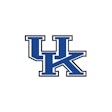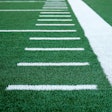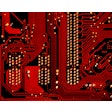Copyright 2017 The Columbus Dispatch
All Rights Reserved
The Columbus Dispatch (Ohio)
What started 10 years ago with an offhand comment about the head-banging woodpecker has become a simple-looking device that just might prevent the types of brain injuries that have parents wondering if they should pull their children from the athletic field.
Meet the Q Collar. The semicircular piece wraps around the sides and back of the neck, placing pressure on the jugular vein to send blood into the skull and, developers say, prevent the sloshing of the brain caused by hits to the head.
The collar, which is being sold in Canada as the Bauer NeuroShield, has its design roots in Whitehall. Take a peek inside a Priority Designs engineering lab, and you'll see several iterations of the device -- the work of a team headed by Jamison Float, senior biomedical engineer at the South Hamilton Road firm.
"It's probably one of the most, if not the most, significant thing I will have ever worked on," Float said. "I would like to see it on every kid that's playing a sport that could potentially cause brain injury."
Hopes are that the collar will reduce incidents of traumatic brain injury in athletes and members of the military, said Tom Hoey, co-founder of Connecticut-based Q30 Innovations, the company that is bringing the Q Collar to the market. Approval by the federal Food and Drug Administration is needed before the collar can be sold in the United States.
Q30 became involved in the collar's development in 2012, when Hoey and others were introduced to Dr. David Smith, who came up with the jugular-vein theory.
About a decade ago, Smith, a physician who now lives in Cincinnati, was doing a presentation on wound care to members of the military. The issue of concussions came up, and someone suggested that researchers simply needed to figure out why the woodpecker can bang its head into trees and survive unscathed.
Smith went to work. He discovered that the creature endures about 12,000 impacts to the head each day -- roughly 85 million in a lifetime -- at a force that's 150 times that which would cause a human to pass out.
He also studied head-ramming sheep, bats and diving birds. What they all have in common, he said, is that a muscle -- called the omohyoid -- places pressure on the jugular, sending blood into the skull with each impact and reducing the brain's freedom to jostle around.
Smith theorized that the same action could protect human brains.
"This is the only time there has been any light at the end of the tunnel," he said. "And it's a massive light."
The collar has undergone several tests over the years. The first, using tiny jugular-compression collars on rats, blocked 83 percent of brain injury, Smith said.
Initial tests on humans determined that it did, indeed, lead to more blood in the brain cavity and seemed to have no effect on brain metabolism and things like exertion, jumping, strength and reaction time, according to developers.
A small study was done with a high school hockey team in Cincinnati, then a bigger one with football players. They were both done over one season. Brain scans taken at the start and end of the seasons showed changes to the structure of the brain in players who did not wear the collar, Smith said. Players who wore the collar did not exhibit the changes.
A third study was done with high school soccer players in Cincinnati, and while data are still being processed, the results look promising, said Dr. Gregory Myer, who directs the Human Performance Laboratory at Cincinnati Children's Hospital Medical Center. His lab was involved in a number of the collar's human tests.
It's rare for researchers to make big breakthroughs, he said, but the Q Collar developers are on the forefront of a paradigm shift.
"It's exciting to see the progression of this into being a viable product for everyone out there," Myer said. "The idea of protecting the brain from the inside, it's revolutionary."
Dr. Kevin Weber, a neurologist at Ohio State University's Wexner Medical Center who was not involved in the collar's development, said large studies are still needed to show whether the device reduces concussions and is safe.
He's concerned that increasing inter-cranial pressure could set someone up for "a pretty catastrophic injury if they were to sustain a skull fracture or anything that would (further) increase skull pressure."
While the device is promising, Weber said, the brain-scan evidence doesn't equate to showing a reduction in concussion diagnoses.
"If the data doesn't show this reduces the risk of concussion at all, it's going to be a tough sell," he said.
So far, several million dollars have been spent on studies and development, said Q30's Hoey. And research continues as the company seeks Food and Drug Administration clearance.
In the meantime, word has gotten out. It's been widely reported that Carolina Panthers linebacker Luke Kuechly has worn the device, and a spokesman from the NFL Players Association said the group is gathering information on the research and development of the collar.
A representative of the NFL did not directly address the collar but said that research and evaluation of devices focused on prevention, diagnosis and treatment of injuries is ongoing. The NCAA declined to comment.
Locally, an Ohio High School Athletic Association spokesman said the product is on its list of items to talk about with experts.
Steve Specht, coach of the St. Xavier High School football team that wore the collar as part of a clinical trial, did not return messages seeking comment.
Representatives of Bauer, which is selling the Canadian product, also did not respond to messages. But Hoey said Bauer launched the NeuroShield in late summer. It's available at more than 75 retail locations and has been well received, he said.
At Whitehall's Priority Designs, Float said the collar applies about 1.5 pounds of force and comes in several sizes. The gap it leaves across the Adam's apple can be easily measured to ensure proper fit, he said.
"It's actually very hard for me to watch football, to watch hockey and not see a device on the neck," Float said. "It's just a big open space we could be using to protect people."
@JoAnneViviano
Read More of Today's AB Headlines
Subscribe to Our Daily E-Newsletter
Terms and Conditions Privacy Policy



































